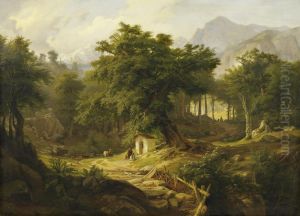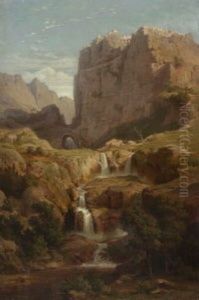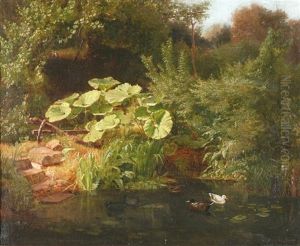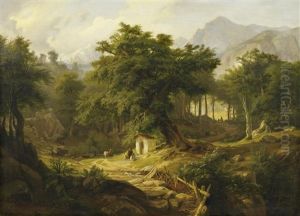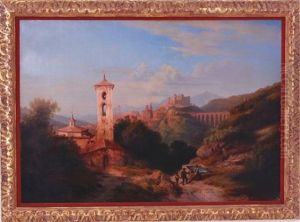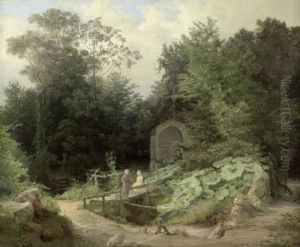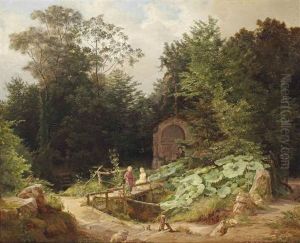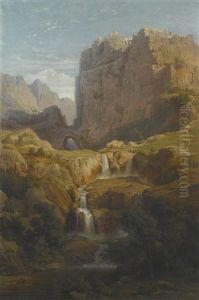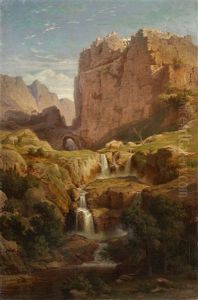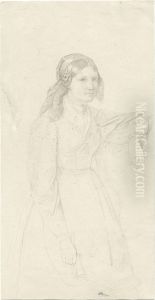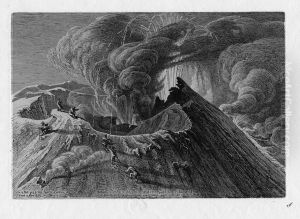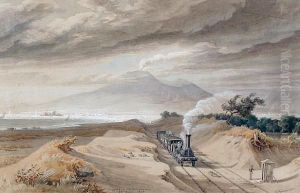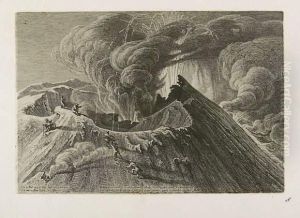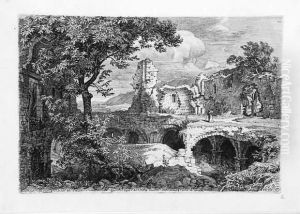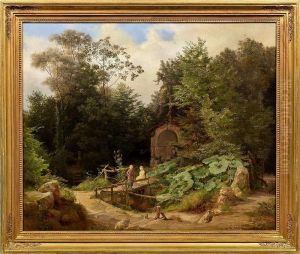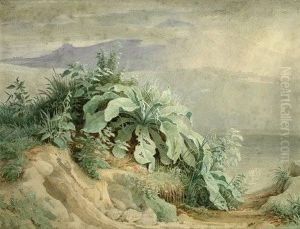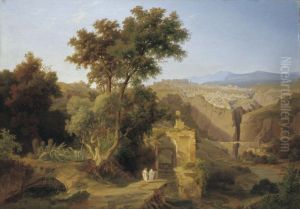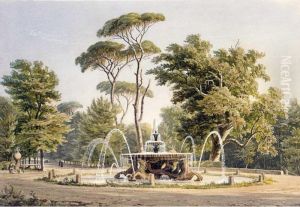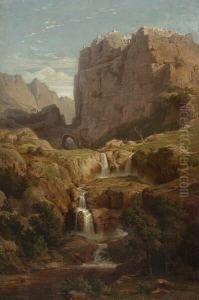Georg Heinrich Busse Paintings
Georg Heinrich Busse was a German painter, draftsman, and lithographer born on February 15, 1810, in Braunschweig, Germany. Busse is recognized for his contributions to the Romantic movement in art, a period which emphasized emotion and individualism as well as glorification of the past and nature. He embarked on his artistic journey at an early age, showing a profound interest in the arts which led him to pursue formal education in this field.
Busse's education in the arts took him to various parts of Europe, including studies at the University of Göttingen and the Düsseldorf Academy, one of the leading art schools in Germany at the time. His travels and studies across Europe, particularly in Italy, greatly influenced his artistic style and focus. Italy, with its rich cultural heritage and picturesque landscapes, inspired Busse to capture its beauty and historical significance through his works.
Throughout his career, Busse specialized in landscape painting, a genre that allowed him to express his fascination with nature and historical sites. His works are characterized by their detailed and realistic portrayal of natural and architectural elements, often infused with a sense of romanticism. Busse's talent in lithography, a printmaking technique that was popular in the 19th century, also set him apart. He was adept at using this method to reproduce his and others' artworks, contributing to the dissemination of romantic landscapes and historical scenes to a broader audience.
Despite his contributions to the art world, Georg Heinrich Busse remains a relatively obscure figure in the annals of art history. His works, however, continue to be appreciated by collectors and historians who recognize his skill in capturing the essence of the Romantic era. Busse's dedication to his craft and his ability to convey the beauty and emotion of his subjects through his paintings and lithographs have ensured that his legacy endures.
Georg Heinrich Busse passed away on March 9, 1868, in Braunschweig, Germany, leaving behind a body of work that continues to inspire admiration for its technical skill and romantic sensibility. His life and oeuvre offer a glimpse into the artistic movements of the 19th century and the enduring appeal of romantic art.
